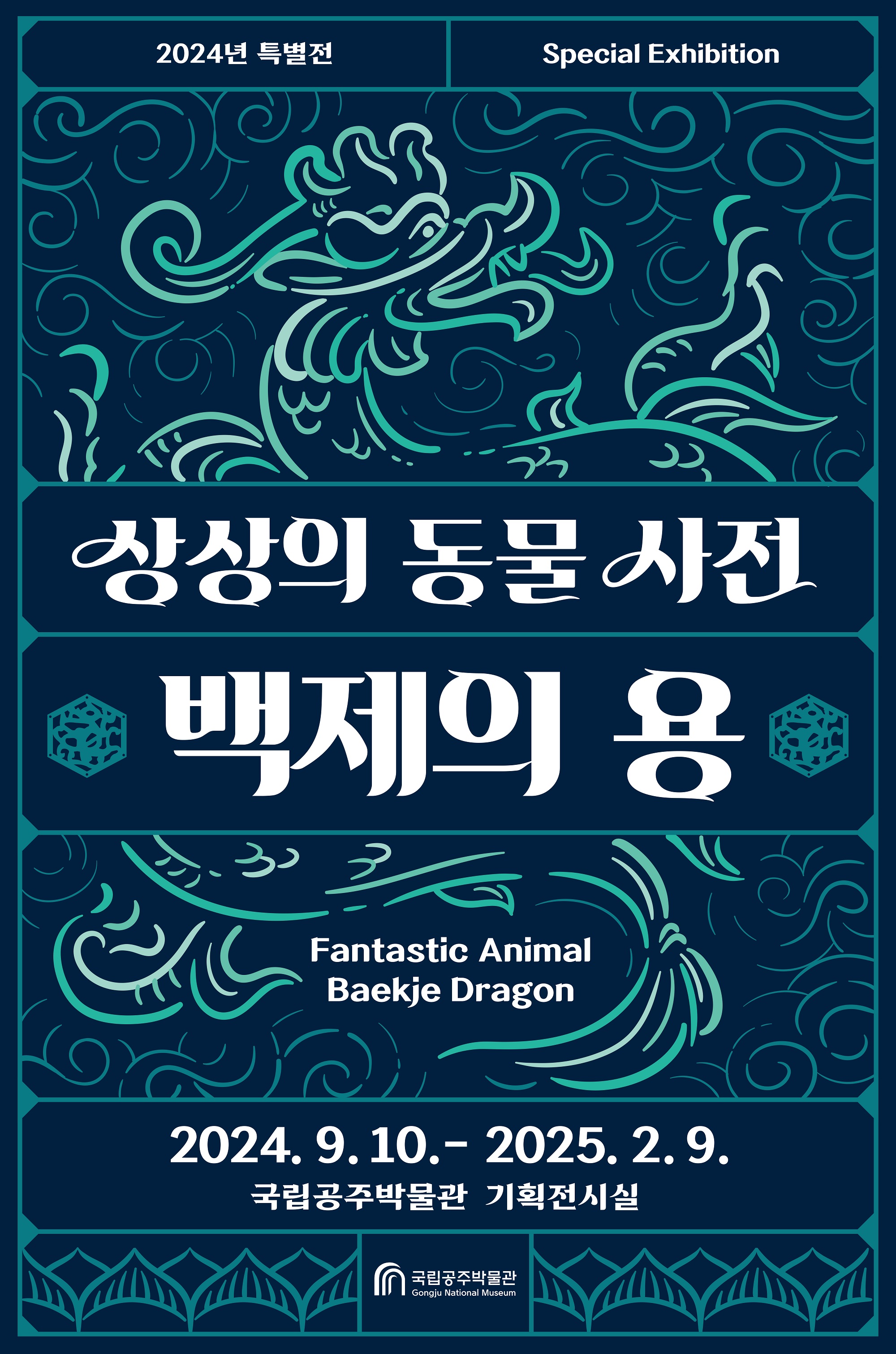Scheduled Exhibitions

Past Exhibitions
Fantastic Animal: Baekje Dragon
- Period 2024-09-10 ~ 2025-02-09
- Organizer Gongju National Museum
- Place Special Exhibition Hall
-
Explanation
Prologue
Natural phenomena that are outside human control, such as severe storms and floods, have instilled fear in humans by posing major threats to their life. People in ancient times tried to cope with their fears by depending on deities or other supernatural beings which were believed to have magical powers. One such mysteriously powerful being was a “dragon”.
What made the ancient people imagine the mythical “dragon”? Was it attributed to the bones of a certain huge animal they came across on a journey? People in Northeast Asia believed that a dragon was a composite of the features of nine animals, but its appearance was not as grotesque as was generally expected. The Imaginary Animal came to be worshipped as the deity or emperor of water that reigns over all living animals in nature, expels evil, and portends fortune.
The dragon, which has always been around us since it was conceived by human imagination, was included in a legion of imaginary animals revered by the Baekje people. As shown in this book, some of the finest examples of the dragon in Baekje can be found at the motif decorating the sword of King Muryeong and the bracelet of his queen. The big sword with ring pommel discovered by the waist of the king and the queen’s bracelet symbolized the authority and dignity of the royal couple of Baekje. The artisans of artifacts used the dragon motif to express their imagination in a tangible manner and achieve artistic creativity. We hope that the readers of this book will be able to discover the distinctive features and meaning of the dragon imagined by Baekje people through their stories of this mythical animal contained in the book.